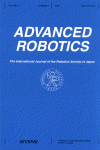
Practical design of robots operating in radiation environments
Nuclear robots must be hardened against radiation for effective operation in high-radiation environments. These robots require special components that usually have few functions, high costs and long delivery times. In the present study, we propose a modulated and hierarchical electrical
circuit system for robot components such as actuators. The hierarchical system is set into a design that can withstand radiation without reducing or limiting the functionality of the robot. The hierarchical system is achieved by minimizing the variety of integrated circuit (IC) components
to be used and selecting specific ICs that require radiation testing. These ICs are defined by spotted ICs with regard to the integration density and operational speed. In some cases, it is possible to select off-the-shelf IC components, but certain key IC components are needed for on-line
irradiation tests, depending on robot operation reliability and the radiation environment. Since the serial numbers of off-the-shelf IC components are random, it is important that a sufficiently large number of IC components are tested under the operating conditions for statistical evaluation.
If the radiation lifetime is random, then the radiation lifetime of the sorted IC components can be estimated statistically. Here, the robot user decides the operation based on this lifetime. By doing so, the experimental cost can be minimized in accordance with the proposed method at the
user's operational risk. Of course, if on-line irradiation tests are performed for various types of IC components, the radiation lifetime of the robot can be predicted with a relatively high accuracy. As a result, the design of a robot that operates under certain radiation conditions, while
having a certain lifetime and cost, is possible. This design technique was applied to a nuclear disaster prevention robot and the radiation lifetime of the spotted IC components was shown to be distributed randomly, indicating the validity of the proposed method.
Keywords: HARDENED INTEGRATED CIRCUIT; IRRADIATION TEST; ROBOT; TELEOPERATION
Document Type: Research Article
Affiliations: 1: Meijo University, 1-501 Shiogamaguchi, Tenpaku-ku, Nagoya, Aichi 468-8502, Japan 2: Mitsubishi Heavy Industries, Ltd, Kobe Shipyard & Machinery Works, 1-1-1 Wadasaki-cho, Hyogo-ku, Kobe-shi 652-0854, Japan
Publication date: 01 May 2007
- Access Key
- Free content
- Partial Free content
- New content
- Open access content
- Partial Open access content
- Subscribed content
- Partial Subscribed content
- Free trial content